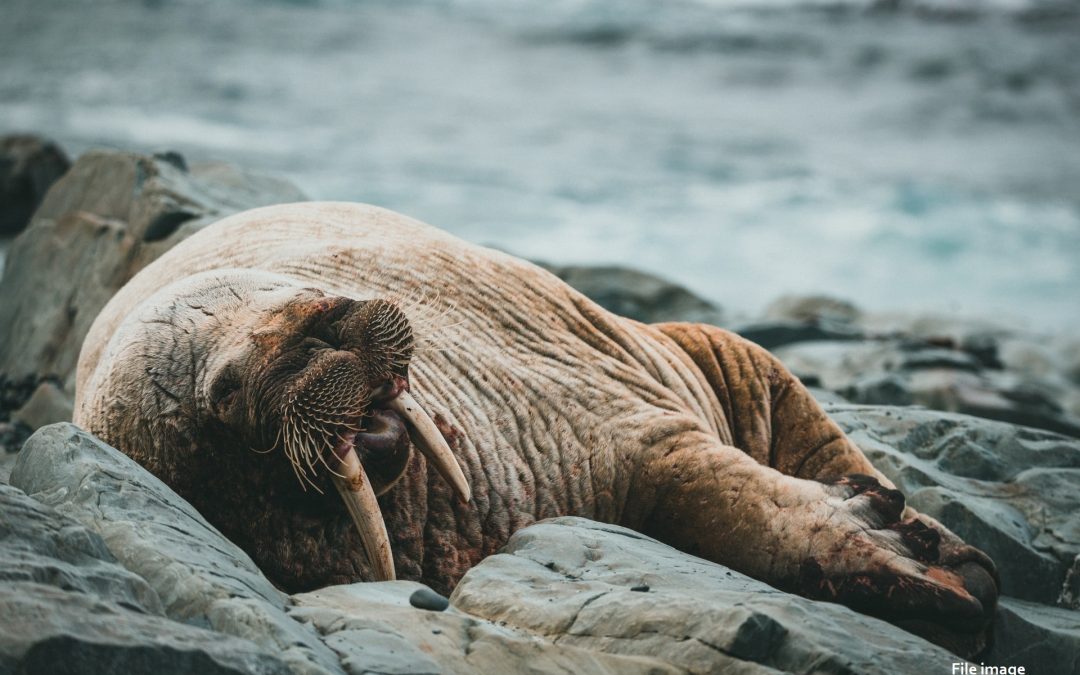A Pacific walrus was yesterday seen resting on a Polish beach, in what is thought to be the first ever sighting of the large marine mammal in the country.
The animal, whose species is normally found around the North Pole in the Arctic Ocean and subarctic seas of the Northern Hemisphere, was spotted by a man walking along the beach near Mielno, a summer tourist hotspot.
Śmialiście się z morsowania, a tu bach. Pierwszy w historii prawdziwy mors pojawił się na bałtyckiej plaży w Polsce! 😍 https://t.co/7nTEBOampU
— Jan Mencwel (@JanMencwel) June 23, 2022
The man, who took photos and a video of the walrus from a distance before continuing his journey, said it was lying peacefully near the sea, reports Gazeta Wyborcza. He admitted that he was cautious in face of the animal, which he described as big “as half my room”. Adult males can weigh more than 2,000 kilograms (4,400 lbs).
Iwona Pawliczka vel Pawlik, head of the Marine Station in Hel, said that this is the first such sighting in Poland. Scientists suspect that the walrus is the same one seen a week ago on a beach on the German island of Rügen. There, too, it caused quite a sensation.
Scientists from the local marine museum there identified the visitor as a young female walrus. The animal had no signs of injury and appeared healthy.
🎄Walross wählt Rügen 🎄
.
Am 16. Juni wurde im Norden der Insel ein Walross gesichtet. Es ist das erste Mal, dass so ein großer Meeressäuger an der Ostseeküste Vorpommers auftaucht. Das Tier ist über 2 Meter lang. pic.twitter.com/ubHCnMlSX9— KATAPULT MV (@katapult_mv) June 17, 2022
“We assumed that after returning to the sea it would withdraw from the Baltic, but in the meantime, it moved eastwards,” said Pawliczka vel Pawlik. “From the photos, it seems that this female is quite underweight.”
“The Baltic is not a home for walruses,” Konrad Wrzecionkowski of the WWF’s Blue Patrol told TVN24. “It would be best if it found its way back to the North Sea…In the Baltic it could have a problem with finding the appropriate amount of food.”
The walrus has a diverse and opportunistic diet. They tend to feed on what is near the bottom, which includes shrimp, crabs, tube worms, soft corals, tunicates, sea cucumbers, various molluscs and some types of slow-moving fish.
Morsowanie w Mielnie? Tylko przed wakacjami 😅
Na miejscowej plaży wygrzewa się mors! Nikt nie pamięta, kiedy te stworzenia były ostatnio widziane w Polsce ❤️
Fot. od Błękitnego Patrolu @WWF_Polska pic.twitter.com/iPqmLZhu1S
— Radio 357 (@radio_357) June 23, 2022
They live mostly in shallow waters above the continental shelves, spending significant amounts of their lives on the sea ice looking for food.
The IUCN Red List of Threatened Species lists the walrus as a vulnerable species and estimates the adult population at 112,500, pointing to a decline in the number of mature individuals.
Main image credit: Unsplash/Jonathan Cooper

Alicja Ptak is deputy editor-in-chief of Notes from Poland and a multimedia journalist. She has written for Clean Energy Wire and The Times, and she hosts her own podcast, The Warsaw Wire, on Poland’s economy and energy sector. She previously worked for Reuters.




















